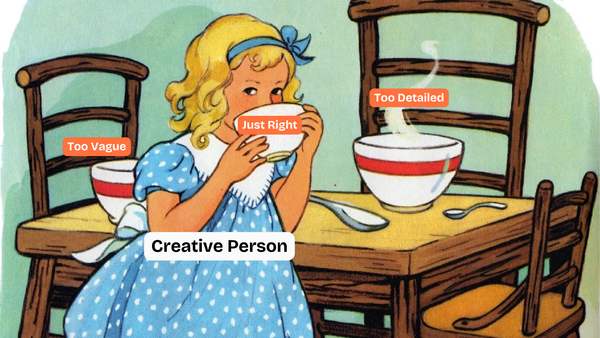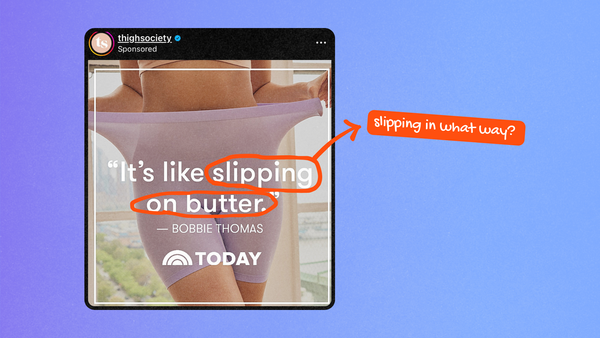Like it or not, in every piece of video content you're selling something be it an idea, product, or service.
But knowing what to say is usually the first roadblock. And when you do get "unstuck" and post a video, it gets little to no views.
Today we're fixing that by improving your video copywriting which can help you...
- Improve viewer retention (especially in those first crucial seconds)
- Makes you a better overall communicator be it in a video or an email to busy people who have zero seconds to waste
In this article, I'm going to share 8 copywriting formulas so you can make even the most boring story into an interesting one.
Let’s dive in!
8 Video Copywriting Formulas for Better Video Viewer Retention
Use the below formulas to make any story an interesting one.
PPB: Preview, Proof, and Bridge
| Acronym | Definition |
|---|---|
| Preview | Gives people a clear idea of what problem the content will solve |
| Proof | The evidence that this topic matters OR it could also be proof you’re qualified enough on the subject matter being discussed to validate you're worth listening to |
| Bridge | The invitation for people to dive in now that they have some context and receive the value you promised to give. |
With so👏much👏content👏 on social media it’s important to be clear on why something matters and make sure your audience knows it.
I default to using this formula when I have strong and timely relevant statistics to back up a topic (or also screenshots with evidence to back up I know what I’m talking about).
This formula is especially great for topics people might approach with skepticism and hesitation. For example, if there's a new social media platform you're trying to get people to buy into you could use PPB to provide:
- Preview: How the platform connects to their end goals
- Proof: Success stories, facts, and figures from similar brands succeeding on the new platform
- Bridge: An invitation to keep watching if you use this formula for your intro or to drop the CTA
PAS: Problem, Agitate, Solve
| Acronym | Definition |
|---|---|
| Problem | Identify the problem |
| Agitate | Agitate the problem |
| Solve | Solve the problem |
If you’ve ever gotten FOMO after scrolling through Instagram, you probably came across content using this formula. It puts a label on your problem, tells you how much worse it’ll get, but hey no worries because if you listen to me I can help you solve this so it doesn’t get to that.😝
Here’s the thing with this formula (in my opinion)...
Some content creators get slimy with this formula and use it to sell an “inspiration porn mastermind” with the false promise of generating 6 figures (or more). Or they use it in other toxic ways.
But maybe that’s just what these social media algorithms like feeding me 🤣. Just because a formula works it doesn’t make it on-brand.
How you make people feel is a big part of brand building.
You can’t control how everyone will feel and think of your brand. But you can control what you put out there and use your most rational judgment to gauge if it supports your goals and intentions as a brand.
Be discerning.
You CAN use this formula in a kind-hearted way. I used it for the intro of this blog.
Before – After – Bridge
| Term | Definition |
|---|---|
| Before | Here’s your world now |
| After | Imagine what it’d be like, having [PROBLEM] solved … |
| Bridge | Here's how to get there |
Remember how PAS (problem, agitate, solve) was kinda sorta like the evil-ish formula? Well BAB here would be the good guy.
Instead of feeding people a shit sandwich telling them how fucked they could be if they keep screwing up we go the route of telling them how much better their life could get.
- Label the problem that’s currently affecting the viewer
- Paint a picture of how much better life would be if they addressed the problem differently
- Invite them to take action
If you’re like me and prefer a “the grass is always greener on the other side” type of mentality and vibe then use this formula.
However, it is true that usually people are drawn to the things that cause them the most pain. It's why we gravitate towards fixating on the one asshole in our comments instead of the 27 nice people.
But once again...it comes down to what YOU feel works for your brand not just in terms of performance but also values.
The “So What” Test
Whenever you make or do something ask yourself, so what? Of course, you think whatever you just launched is awesome.
You’re excited (as you should be). But you’re viewing things from your own biased lens.
So flip the metaphorical camera. 🔄
You have something to sell but so what? You need to frame it in a way that your audience understands what the value is.
- What’s your audience's biggest pain point?
- How can you restructure the meat of your message into a truth that means something valuable to your intended audience?
Casper wants you to buy their mattresses. So what?
Do you want comfort and a better night of rest? Get a Casper mattress.
Tesla sells cars. So what?
Owning a Tesla is a status symbol of sorts that says visionary and innovator. It's more than just a car.
Canva is offering their design tools. So what?
You’ll be able to make gorgeous designs quickly, easily, and affordably from templates (or from scratch) using their massive library of assets.
How can you apply this IRC (in real content haha)?
Let's say you're teaching people how to add an SRT subtitle file to their YouTube videos so people can have closed captions. So what? People will think things like:
- I don't have the time to put in this extra work
- I don't really care that much about making my content more user-friendly
- SRT what? I'm not even gonna watch the rest – doesn't sound like this is for me
But what if you lead with facts that touch on things they are aware of and care about?
You could mention things like...
- 80% of people who use captions DON'T have a hearing impairment (People simply like captions) - Verizon and Publicis Media Study
- CTA clicks dropped by 26% in a test by Instapage to check how videos performed when captions were removed
- 37% of people turned on the sound because they said added comprehension from the captions made a video more interesting
Maybe the part about how captions make for a more inclusive experience doesn't appeal right away. But what's that about more engagement and potentially leaving some on the table by not adding captions?
People WILL listen to stuff that directly affects them because it's in our nature.
The 5 Basic Objections
1. I don’t have enough time.
2. I don’t have enough money.
3. It won’t work for me.
4. I don’t believe you.
5. I don’t need it.
We’re all selling something whether it’s a product, service, an idea or a combination of these. And whenever you’re being sold to, these are usually the 5 excuses you lean onto to explain why you’re not buying.
As you create, try to solve at least one of these objections.
You have this amazing thing you want people to know about. But people are skeptical. They don't know you or what you're offering the way you do.
So how can you put their mind at ease and rephrase things to melt away the worries and skepticism with this in mind?
I love using this formula to write an introductory statement telling people immediately what this content is going to give them before diving directly into the meat of the tutorial.
For example, adding subtitles to video is perceived as being a time-consuming process. So I could tell people I’m going to show them how to do it and address a few objections by saying:
How anyone can add subtitles to video with the click of a button
Here's a quick breakdown of how and why this addresses objections:
| Word(s) | Objection Addressed | Why? |
|---|---|---|
| Anyone | it won't work for me | If anyone can do it then that means I can do it too |
| The click of a button | I don't have enough time | Clicking a button is fast, I guess I can try! |
But of course, you can use this for more than just your intro.
For longer-form videos, you have more time to cover more ground. So in longer-form content try to address most (or all) of the objections tastefully throughout the content.
PPPP: Picture, Promise, Prove, Push
| Acronym | Definition |
|---|---|
| Picture | Paint an attention-grabbing picture your audience relates to |
| Promise | What exactly will this content help achieve? |
| Prove | Any evidence you’re the one to deliver this solution or why this solution in particular works? |
| Push | Call to action (or as I like to say - call to value) |
This formula is great if you have really strong insights into your audience (as you should). The more you talk to them 1-on-1 OUTSIDE of the comments section or DMs the better the picture you can paint.
For example, let’s dissect something I have to offer: video content tips for marketing professionals
- Picture: I know a lot of people trying to make better videos are tired of spending loads of time and money trying to figure out clunky professional software to edit video. They are burning out and feel like they have no time for themselves to just breathe and be.
- Promise: I can teach them not only how to make more engaging videos but also how to manage their content overall in a way that won’t have them inefficiently spinning 500,000 plates that are just barely staying up.
- Proof: I am a content creator myself with a social media marketing background and handle content for an online video editing startup.
- Push: I’d invite them to keep reading or listening if I’m using this formula for an introduction. Or, if this is the end of the content, I’d drop my call to action here.
ACCA: Awareness, Comprehension, Conviction, Action
| Term | Definition |
|---|---|
| Awareness | States the situation or problem |
| Comprehension | Help your reader understand how it affects them. Explain that you have the solution. |
| Conviction | Reassure and create a desire and conviction for your audience to use your proposed solution. |
| Action | Call to Action |
If you ever struggle to get people to care about something you know affects them, this formula is for you.
ACCA is great to give people the context they need to get why something should matter to them. Usually, your audience knows the surface-level challenges they face.
Let's say you're a social media marketer.
Your potential client might think their goal is to hit 10K on Instagram. Therefore that's all they search for. But really, they need to find a way to align content goals with their business' north star metrics so that the success of their content efforts is better measurable and more valuable.
However, this person is searching for ways to grow on Instagram. Talk to them right away about aligning goals and chances are you'll lose them in the first 5 seconds.
So you need to capture their attention by showing you're aware of their challenge and then tie in what their REAL blocker is as you transition into providing added context for comprehension.
Open Loops
Create a cliffhanger with your content
It’s hard to leave a puzzle unfinished when there are only one 2-3 more pieces to lock-in.
An open-loop gives people a taste of the big picture without closure. It’s like that puzzle or the end of a Netflix episode before you scramble to find your remote to click on ‘watch next episode’.
Social media-wise, you might know this formula best from TikTok when people are like "like for part 2"
An open loop is a way of telling people what the content is about and what it’ll solve without saying exactly how.
When applied to video marketing, this is great to tease something you're planning to launch and slowly drip out content to create excitement and momentum for the big day.
Best Practices for Writing Great Copy for Your Video Marketing Content

The Ugly First Draft (TUFD)
Idea diarrhea. That's what it's called in one of my favorite content writing books – Everybody Writes by Ann Handley.
If you want to make great content you first need to just get the contents of your ideas out of your head. It's supposed to be a mess. But like every mess, you'll clean it up later (I sure hope at least)!
Add Subtitles and Watch on Mute
92% of people watch videos with the sound off on mobile. Is what you're saying still interesting and read well when muted?
Write Like You Talk
Easier said than done? Maybe.
But try this...
Use your phone's voice-to-text option and pretend you're talking to someone you know. This can be your ugly first draft of your outline or script.
Now that you have my favorite marketing video copywriting formulas, it’s time to pick a formula and outline your next video!






